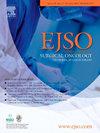对根治性前列腺切除术后生化复发且 PET 淋巴结阳性的前列腺癌患者进行挽救性淋巴腺切除术或放疗:系统回顾和汇总分析
IF 3.5
2区 医学
Q2 ONCOLOGY
引用次数: 0
摘要
目的分析根治性前列腺切除术(RP)后因正电子发射断层扫描(PET)阳性淋巴结复发而接受淋巴结清扫(LND)或放疗(RT)挽救治疗的生化复发(BCR)患者的肿瘤治疗效果。方法使用 MEDLINE、Cochrane 和 Web of Science 数据库进行研究,直至 2023 年 6 月。纳入标准为前列腺癌根治术后因 PET 阳性淋巴结复发而接受 LND 或 RT 挽救治疗的 BCR 患者。结果本研究纳入了 19 篇文献中的 2476 例患者(995 例 LND,1481 例 RT)。在LND和RT中,PSA反应的总发生率分别为51.1%和74.3%,PSA进展的总发生率分别为69.8%和26.9%,影像进展的总发生率分别为41.5%和26.9%,全身进展的总发生率分别为41.5%和32.0%,总死亡率分别为0.9%和0.5%,癌症特异性死亡率分别为6.5%和1.3%。结论虽然所有研究的异质性都很高,但在PET阳性淋巴结的BCR患者中,LND的PSA、影像和全身进展汇总率高于RT。对于 BCR 的未来试验设计,评估 PSMA PET 扫描的最佳时机、同时进行的全身治疗和挽救治疗类型势在必行。本文章由计算机程序翻译,如有差异,请以英文原文为准。
Salvage lymphadenectomy or radiation therapy in prostate cancer patients with biochemical recurrence and PET positive lymph nodes after radical prostatectomy: A systematic review and pooled analysis
Objective
To analyze the oncologic outcomes of biochemical recurrence (BCR) patients who received salvage treatment of lymph node dissection (LND) or radiation therapy (RT) for positron emission tomography (PET)-positive lymph node recurrences following radical prostatectomy (RP).
Methods
Research using the MEDLINE, Cochrane, and Web of Science databases was conducted until June 2023. Inclusion criteria were BCR patients that received salvage LND or RT for PET-positive lymph node recurrence following primary RP for prostate cancer. Studies with a follow-up period of less than 12 months were excluded.
Results
This study included 2476 patients (995 LND, 1481 RT) from 19 publications. The pooled incidences were 51.1 % and 74.3 % in PSA response, 69.8 % and 26.9 % in PSA progression, 41.5 % and 26.9 % in image progression, 41.5 % and 32.0 % in systemic progression, 0.9 % and 0.5 % in overall mortality, and 6.5 % and 1.3 % in cancer-specific mortality in LND and RT, respectively. Limitations include high heterogeneity.
Conclusion
Although heterogeneity is high across all studies, the pooled rates of PSA, image, and systemic progressions are higher in LND than in RT concerning BCR patients with PET-positive lymph nodes. For future trial designs in BCR, assessing the optimal timing of PSMA PET scans, concurrent systemic therapy, and salvage therapy type is imperative.
求助全文
通过发布文献求助,成功后即可免费获取论文全文。
去求助
来源期刊

Ejso
医学-外科
CiteScore
6.40
自引率
2.60%
发文量
1148
审稿时长
41 days
期刊介绍:
JSO - European Journal of Surgical Oncology ("the Journal of Cancer Surgery") is the Official Journal of the European Society of Surgical Oncology and BASO ~ the Association for Cancer Surgery.
The EJSO aims to advance surgical oncology research and practice through the publication of original research articles, review articles, editorials, debates and correspondence.
 求助内容:
求助内容: 应助结果提醒方式:
应助结果提醒方式:


